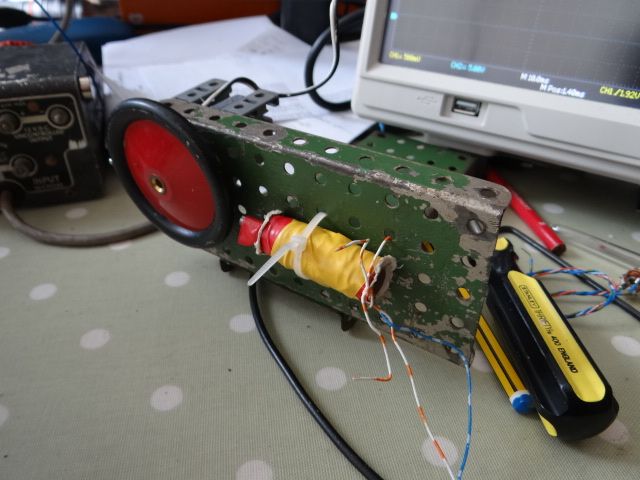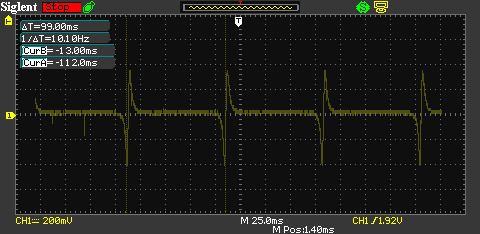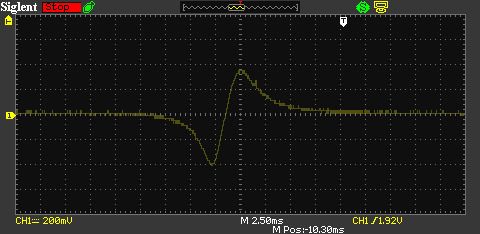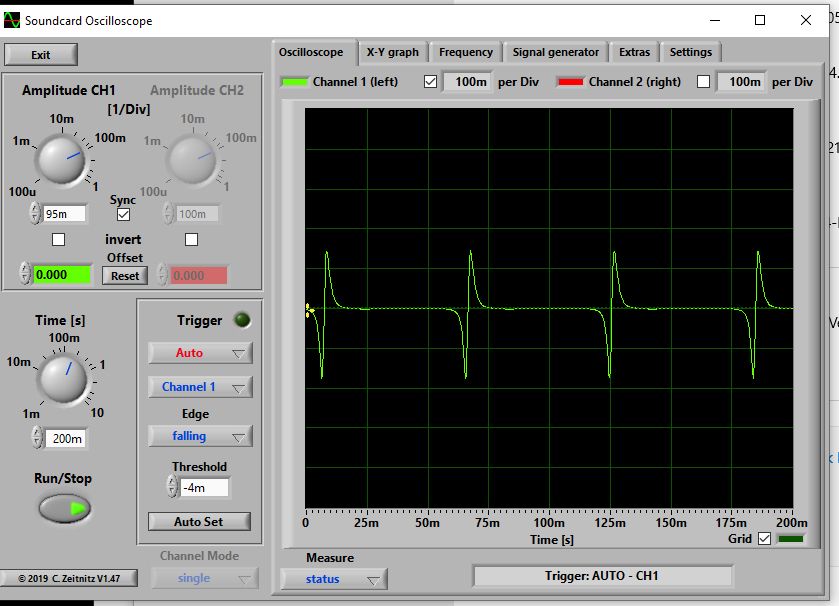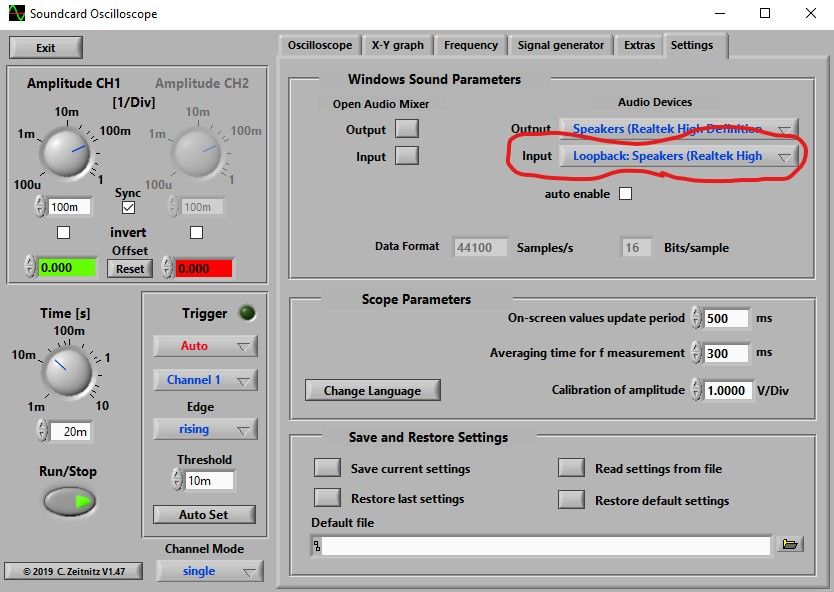Posted by DC31k on 24/09/2022 18:09:39:
Posted by SillyOldDuffer on 24/09/2022 17:46:55:
Operation: set the wiper to ground…
And that is the flaw in the plan. It relies on the knob-twiddler performing his duty with 100% reliability every single time without fail after every change to the input conditions.
If you could show something with a kind of dead-man's control on it that absolutely cannot put anything into the sound card input without positive human action, that would be the beginning of a way forward.
If you can incorporate something in it that will prevent overvoltage altogether (perhaps caused by an involuntary jerk due to sneezing when adjusting the pot), that would increase the reliability of the system.
I'm all in favour of risk managed approaches, and thought for Tim's investigations a pot would be sufficient. However, as this was a good excuse to get out of urgent house-work, I tried the experiment.
Apparatus: A meccano lash-up with motor and wheel that spins a small super-magnet past a sawn-off nail with a few hundred turns of magnet wire coiled around it. The magnet is the shiny dot on the opposite side of the wheel to the nail and coil:

A Siglent SDS1102 CML oscilloscope
Method:
Oscilloscope was connected to the coil on the 5V / graduation range and the wheel turned slowly by hand. This showed a pulse of about ±0.15V so the oscilloscope' sensitivity was increased to 200mV per graduation and the motor powered up with a 1.2V AA cell.
Results.

The oscilloscope registers almost exactly 10Hz so the motor is revolving at 600rpm
The voltage spike is larger than I expected, at 760mV roughly double the turned by hand voltage
Conclusion
I knew but forgot that the voltage generated when a magnet passes a coil is proportional to the speed of transit. Thus, connecting this circuit directly to a sound-card is riskier than I expected! At 600rpm my experimental set-up wouldn't damage a sound-card, but higher rpm exceeds the limit. (At 4000rpm the set-up produces 2.75V pulses.)
My pot circuit is too simple to protect the sound-card if the rpm varies.
————-
I think Tim is looking for a display like this:

The voltage swings ever more negative as the magnet approaches the coil, then flips to positive as the magnet passes TDC, and and falls as the magnet moves out of range. (Reversing the magnet would cause the pulse to go positive then negative.) Anyway, if I've remembered correctly, the voltage is proportional to the rate of change when the coil flips from negative to positive, which depends on how fast the magnet is moving – RPM.
Dave
 Robert Atkinson 2.
Robert Atkinson 2.

